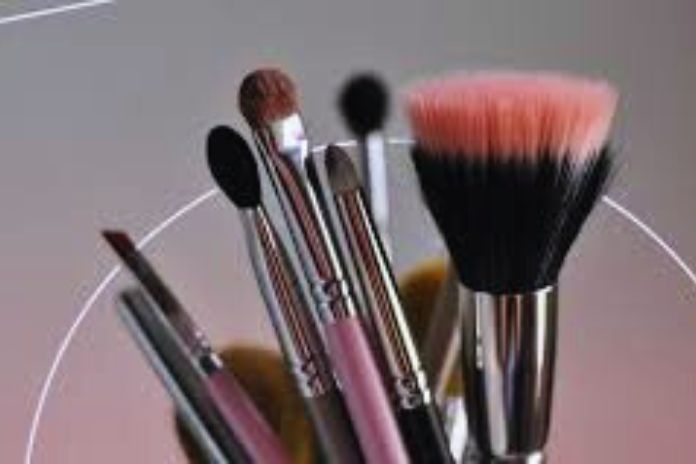Illuminating, shaping and correcting are just a few makeup effects that stand out more if you use the right tools. Do you have a brush kit? We explain how to use them. Certain makeup brushes are a must in your makeup bag, but there’s also a wide range of brushes with a unique purpose in this art. But you must be a professional to do perfect make-up, as long as you use the tools properly. Since there are so many brushes very similar to each other, they are likely to become confusing when using them. For you to take full advantage of its benefits, we present this guide to all kinds of makeup brushes.
What Are Makeup Brushes?
Makeup brushes are tools that provide better coverage and make it easier to apply cosmetics. They consist of a handle generally made of resin, plastic or wood, the extension of which allows them to be handled comfortably. The essence of these makeup tools is in the bristles, as they serve as a vehicle for transferring the product to the skin. Depending on the arrangement and thickness of the strands, reaching any part of the face is possible.
You realize how beneficial they are when you see how grooming looks; it looks different when you use the right brushes instead of providing all products for the same purpose. In addition, brushes and brushes represent indispensable tools in particular cases, such as corrective makeup techniques. They better hide skin imperfections such as hyperpigmentation, acne, and scars thanks to their precision.
Types Of Makeup Brushes
Different makeup brands offer their brushes in basic and covered versions containing all categories. Whether you buy a basic set or a complete one, the right thing to do is choose quality brushes. One key to selecting the best makeup tools is knowing how they’re categorized; the division depends on the size, the material of manufacture, the finish they offer and the length of the threads. Based on these characteristics, we see the different types.
Beauty blenders or make-up sponges do not fall into the brushes category, although they are a useful tool in some make-up. Small They are the brushes you use on your mouth, nose and around your eyes. They are made for areas that require a lot of precision, as they are spots that require minimal touches where compact tools are convenient.
Intermediates
These makeup brushes are made for in-between regions, like the cheekbones.
Big
Its volume is advantageous in areas that require extensive coverage. The skin benefits from it by applying powders, foundations and BB creams.
Natural
Those whose fibres come from animal hair. They are softer and are recommended for applying powders.
Synthetics
They are made to replace those of natural origin and last longer. The Foundation for Advice and Action in Defense of Animals emphasizes the quality of these artifacts, citing their antibacterial quality and promoting animal welfare.
Goupillon
This eyelash brush is suitable for applying mascara, primers or serums.
Fans
They are brushes for light powders. They provide good glides and prevent makeup build-up. The fan edge is recommended for highlighter and blending shadows at the corners of the eyes. Round brushes with this cut collect substances in small quantities. They are also often used for powders but are looking for more coverage. Its use is typical on the cheeks.
Aim
They are precision tools recommended for strokes in specific areas of the face. For example, correction of dark circles and smoky effects in the eye socket and contours.
Flat Cut
They provide extensive and natural coverage by distributing liquid cosmetics evenly and performing a sweep. It is used for concealers and primers.
Multipurpose
They combine natural and synthetic threads. They are multipurpose brushes designed for light polishing.
Cat’s Tongue
Roundheads and rounded dishes are crafted for deep, heavy coverage. One of the cosmetics this brush works on is concealer.
Blunt
They have a diagonal profile that adapts to facial features. They are perfect for the eye socket and cheekbones.
Ovals
Known as a toothbrush due to its resemblance to a toothbrush, it has a dense, silky brush head ideal for an airbrush-like coating. With large blends, you apply and mix; with the small ones, you face the eye contour.
Long
They simplify movements for flawless blending, especially shadows and glitter. The technique consists in making mini closed circles to spread the cosmetic.
Courts
The appearance of these make-up brushes is compact, and they collect more cosmetics, distributing them appropriately.
Brushes
The name reveals its appearance. There are brushes for the lips to outline or fill them. They are extremely fine and solid, which allows for greater precision.
Eyeliners
They consist of flat, short-haired brushes that blend eyeliner or correct eye makeup. Some have a blunt cut, while others look like a brush. Pencil-shaped makeup tools fall into this category, suitable for upper and lower eyelids use.
For Sun Powder
They are medium-sized, dense brushes that get a smooth finish when swept in a circle.
For Eyebrows
It is common for these tools to have an angled end for filling in the brows, while the other corresponds to spiral bristles that shape, dispersing the shadow or gel.
Why Use Makeup Brushes?
Makeup brushes are suitable alternatives for controlling the number of products dispensed onto the skin. As long as you do a good technique, you’ll get a natural, even finish with no variations in complexion. In addition, the use of brushes is flattering because it takes care of facial hygiene. The R-Biopharm laboratory claims many microorganisms could enter cosmetics through the hands and mouth. It means that if you apply makeup with your fingers, you may transfer bacteria and harm your health.
Read Also: Plantar Reflexology: Start On The Right Foot
